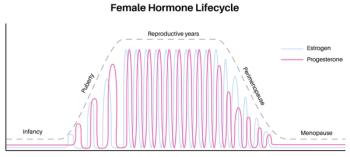
Ear Damage After Roadside Blasts May Be Marker of Neurologic Injury
BALAD, Iraq -- About a third of survivors of roadside bombings have tympanic membrane perforation in one or both ears, an injury that may be a marker for concussion.
BALAD, Iraq, Aug. 23 -- About a third of survivors of roadside bombings have tympanic membrane perforation in one or both ears, an injury that may be a marker for concussion.
A team of military doctors working at the Air Force Theater Hospital at Balad Air Base said that loss of consciousness was 2.76 times more likely among soldiers who had barotraumatic tympanic membrane injury than soldiers whose tympanic membranes are unharmed by blast exposure.
In a letter published in the Aug. 23 issue of New England Journal of Medicine, Lt. Col. Michael S. Xydakis, M.D., M.Sc., and colleagues, wrote that physicians "treating blast survivors with tympanic-membrane perforation need to have a high index of suspicion for concomitant neurologic injury."
Most of the military blast exposure in Iraq comes from roadside improvised explosive devices, more commonly known as IEDs. In 2005, the U.S. military reported almost 11,000 IED attacks, said Dr. Xydakis.
Dr. Xydakis and colleagues analyzed data from 210 male soldiers who were among 682 blast survivors who were treated at the base hospital -- a frontline level I trauma center -- from Oct. 1, 2005 through Dec. 31, 2005.
The mean age of the soldiers was 25 and 37% said they were wearing ear protection at the time of blast. Ear protection consisted of ear plugs or electronically aided earmuff headsets that allowed the soldiers to communicate with other soldiers.
Loss of consciousness was determined by interviews with the patient or witness, or both, or by the presence of anterograde or retrograde amnesia.
Overall, 35.2% of the soldiers had tympanic membrane perforation and in 37.8% of those cases the damage was in both ears. Among soldiers who wore ear protection the incidence of tympanic membrane perforation was 22%.
Seventy five soldiers had loss of consciousness (35.7%), but among soldiers with tympanic membrane injury, 60.8% had loss of consciousness, Dr. Xydakis and colleagues wrote.
Although ear protection was associated with a lower rate of tympanic membrane rupture the use of protection and it "did not modify the relationship between perforation and loss of consciousness."
Newsletter
Enhance your clinical practice with the Patient Care newsletter, offering the latest evidence-based guidelines, diagnostic insights, and treatment strategies for primary care physicians.

























































































































































































































































































